Dr. Phil Zeltzman’s Blog
How Nestle’s leg almost got amputated
Nestle, a 6 year old pit bull, started limping on her left hind leg. Her owner took her to her family vet to figure out what was wrong.
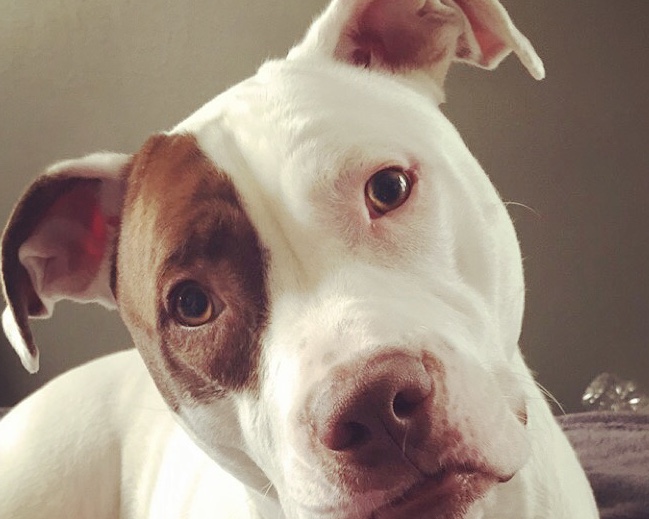
The vet took one X-ray of the leg and gave the owner some devastating news: Nestle had bone cancer – most likely osteosarcoma. He recommended that she been seen by a surgeon to discuss what options were available.
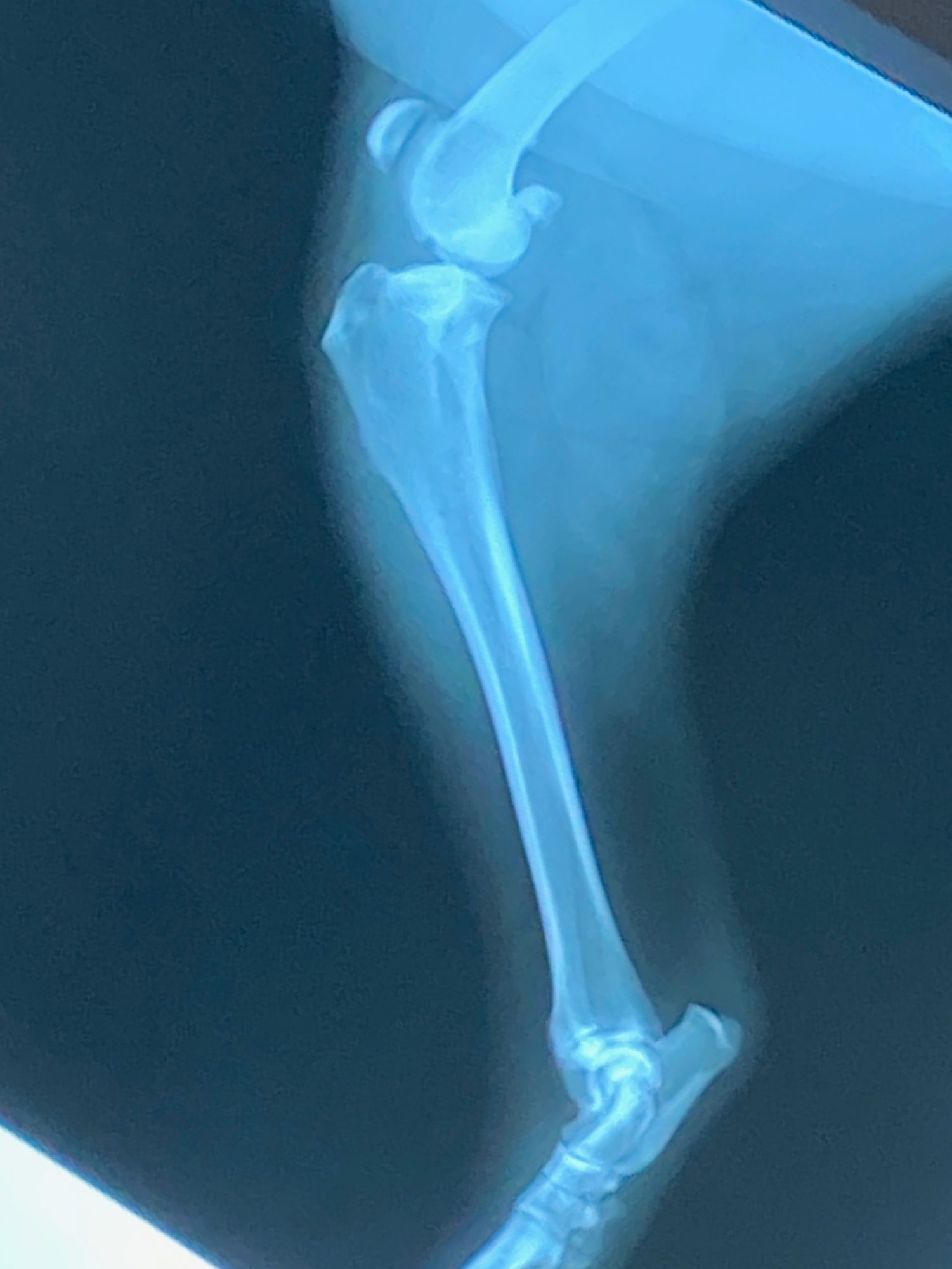
Nestle’s dedicated owner immediately took her to see the surgeon. He reviewed the X-ray taken by the family vet and agreed with the diagnosis. Then he recommended to take her to surgery right away to have her leg amputated. Amputation is indeed the standard of care for bone cancer.
But Nestle’s owner didn’t feel right about the whole situation. He couldn’t explain it. It just didn’t sit right with him. “I knew we had to get a second opinion. When I looked at Nestle, something just told me I wasn’t getting the most accurate information.”
Trusting his gut, he reached out to me for a second opinion about his dog’s unfortunate situation. I asked him to send me the X-ray his vet had taken for me to review. After looking it over thoroughly, and with all due respect, I didn’t see anything convincing on the X-ray.
That put me in a diplomatically tricky position…
I told him that I would not feel comfortable amputating Nestle based on that X-ray only.
Instead, I recommended doing a full “workup” – by the book.
X-rays of the bone in question, in addition to the knees and the hips to be thorough. I also recommended chest X-rays since bone cancer readily spreads to the lungs. And full blood work for good measure, to make sure Nestle was a good candidate for anesthesia.
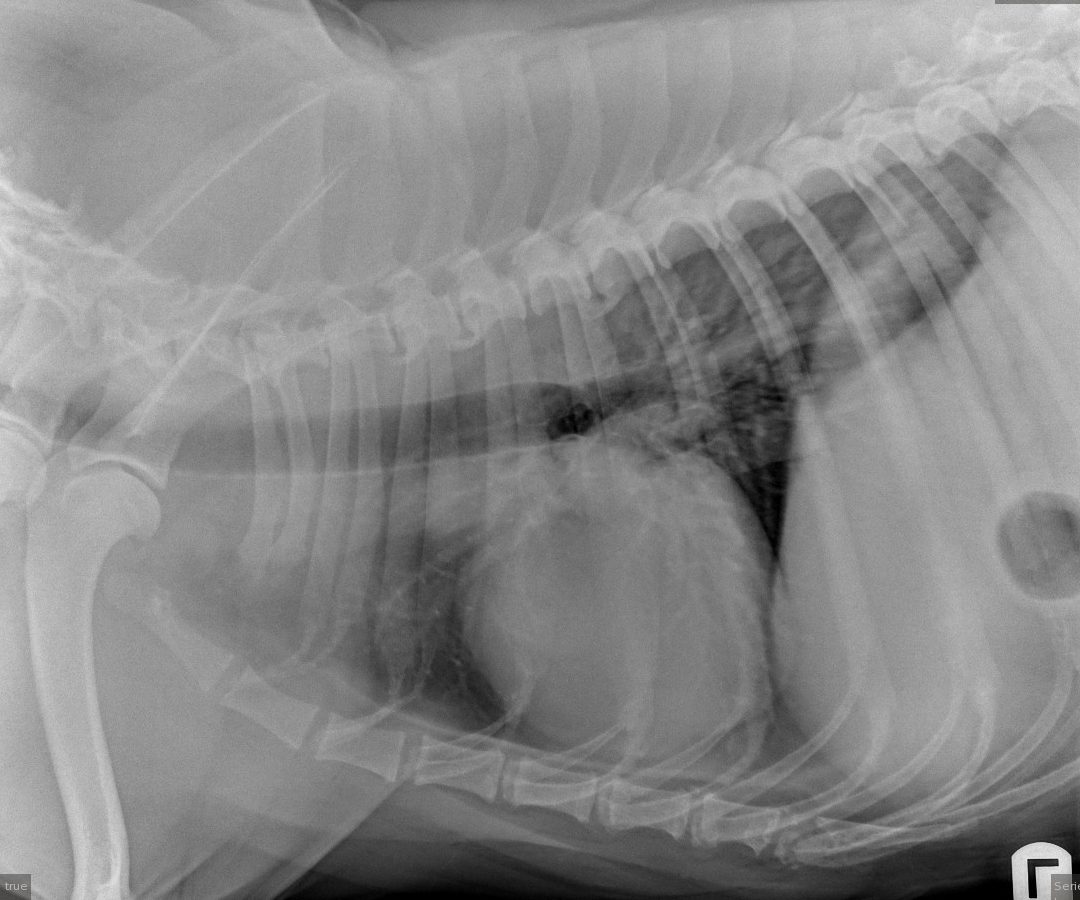
That was a big leap of faith, and a significant expense, but Nestle’s owner trusted me enough to follow my advice.
Once I received the X-rays from the clinic I referred him to, there was no question in my mind. Nestle did not have bone cancer. To be extra safe, I even emailed the X-rays to several surgeon friends. They all agreed with my opinion: no sign of bone cancer.
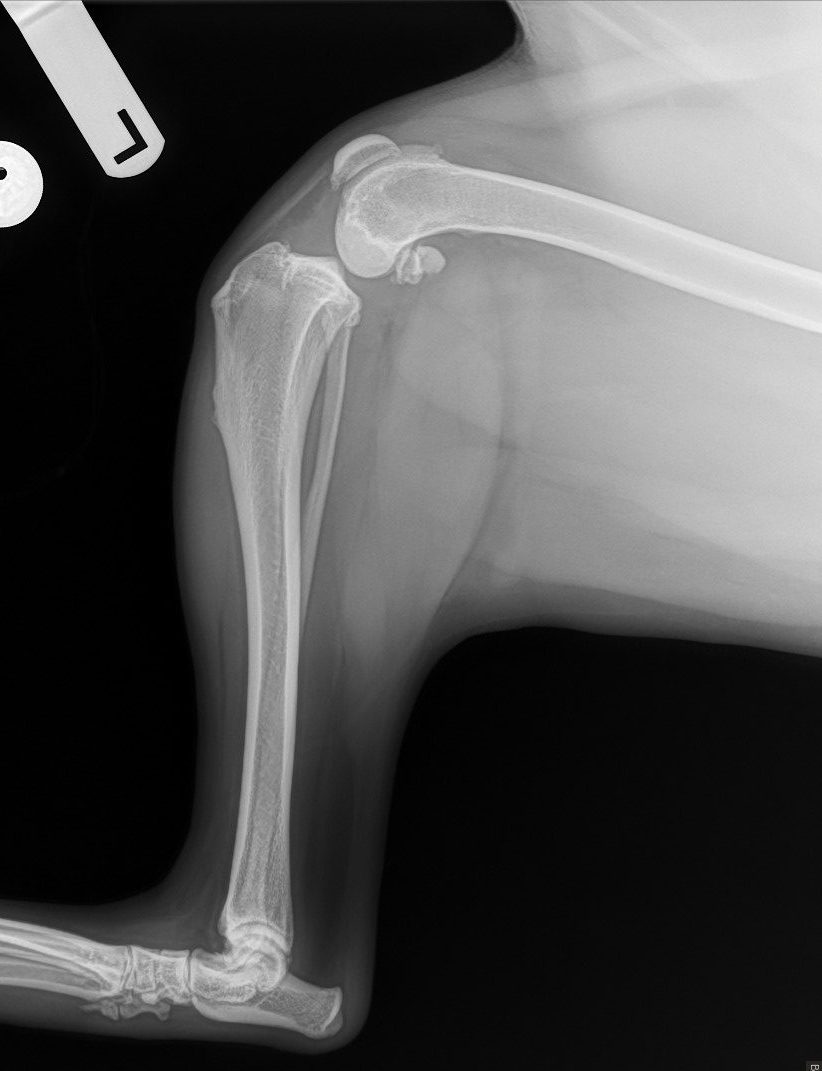
So what did Nestle have? A torn ACL.
Rather than an amputation, she needed a TPLO (Tibial Plateau Leveling Osteotomy).
Both happy and a bit uneasy (i.e. going against a family vet’s and another surgeon’s opinion), I delivered the news to Nestle’s owner. He was beyond grateful for the amazing news.
Can you imagine the emotional roller coaster?
We set up surgery for her TPLO procedure the following week. She had a successful surgery and recovered uneventfully.
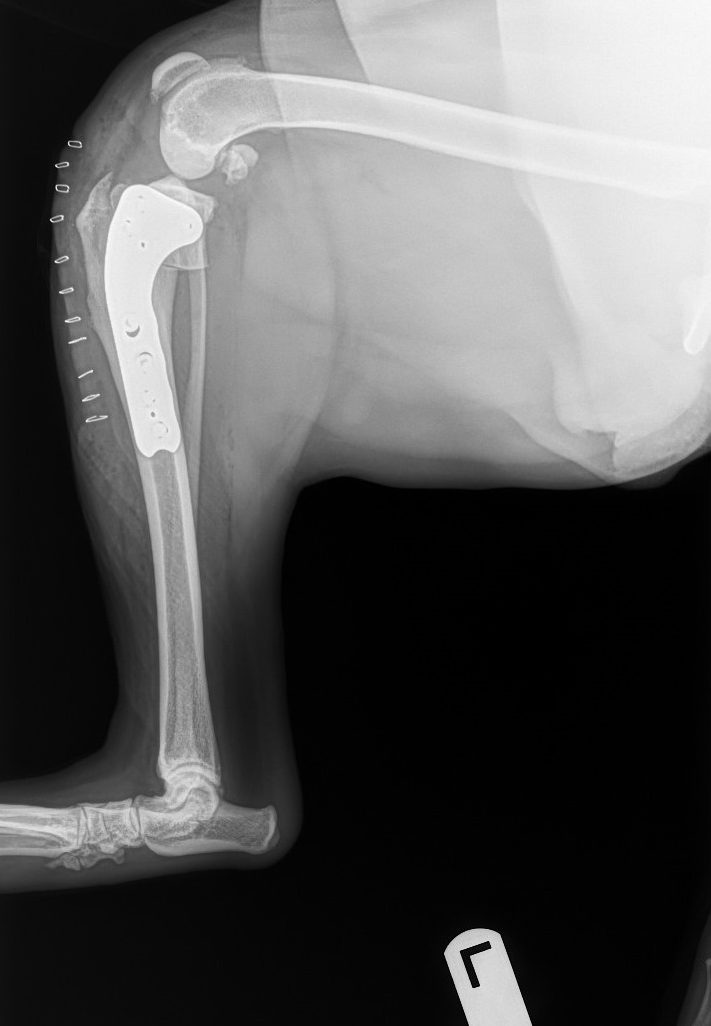
The owner and his family were so happy. They were relieved that they trusted their gut and pursued a second opinion for their dog.
What’s the moral of the story? My point is certainly not to pretend that I am smarter than the other surgeon.
Here are a few points to never forget if you get in a similar situation:
. A thorough vet will always do specific things rather than cut corners. For example, we almost always need “2 views” or 2 X-rays, to get a better idea of the anatomy in 3D: one from the front and one from the side. Nestle’s vet, with all due respect, only took a view from the side. I always ask for “2 views” of the bone.
. When cancer is suspected, we usually take chest X-rays to make sure the cancer hasn’t spread to the lung (I say usually because in some cases we need to look inside the belly for spreading). Can you imagine amputating a dog’s leg, and then later realizing that the lungs are full of metastasis?
Incidentally, a thorough vet will take not 2 but 3 views of the chest: one of the front, and one from each side. Again, don’t cut corners.
. And of course, we always perform full blood work before putting a patient under anesthesia, to ensure they are a good candidate, ie internal organs such as the kidneys and the liver, are healthy enough.
. And here is my final and most important point: whenever something doesn’t seem or feel right about a practice, a vet or a treatment recommendation, you should trust your gut. It is your absolute right to get a second opinion if you aren’t comfortable.
You should never feel embarrassed or ashamed to seek a second opinion. You need to be your pet’s best advocate.
The diagnosis and the outcome may not be any different, but at least you can rest assured that you will make the best possible decision for your pet.
“The initial thought of losing Nestle to bone cancer absolutely crushed my family and I. Nestle is a rescue & since the day I rescued her, I vowed to do everything in my power to keep her safe and comfortable throughout her life after a rough beginning. After her initial diagnosis, I felt like I had failed her. But there was something about Nestle’s demeanor, I can’t explain it, I knew there was more to the initial diagnosis. And I knew I wanted a second opinion, especially after such a serious diagnosis.”
And he concludes:
“Without a doubt, Dr. Zeltzman and the staff at the clinic changed Nestle‘s life for the absolute best, and they gave me back my best friend when I thought I’d lost her for good.”
Phil Zeltzman, DVM, DACVS, CVJ, Fear Free certified

Dr. Phil Zeltzman is a traveling veterinary surgeon in Pennsylvania & New Jersey. An award-winning author, he loves to share his adventures in practice along with information about vet medicine and surgery that can really help your pets. Dr. Zeltzman specializes in orthopedic, neurologic, cancer, and soft tissue surgeries for dogs, cats, and small exotics. By working with local family vets, he offers the best surgical care, safest anesthesia, and utmost pain management to all his patients. Sign up to get an email when he updates his blog, and follow him on Facebook, too!
Angel and demon (The amazing story of one tough cancer survivor)
I met Oliver, a 9 year old Yorkie, in late January of 2019.

His family vet had incompletely removed a mass on the gum of the lower jaw (aka mandible). It turned out to be malignant melanoma, an aggressive type of cancer (you may have heard of it in the skin of people or pets).
An aggressive cancer requires an aggressive treatment…
Therefore, more tissue, i.e. part of the jaw bone, had to be removed. This is called a partial mandibulectomy.
Below is an X-ray that shows the extent of the surgery (between the red arrows).
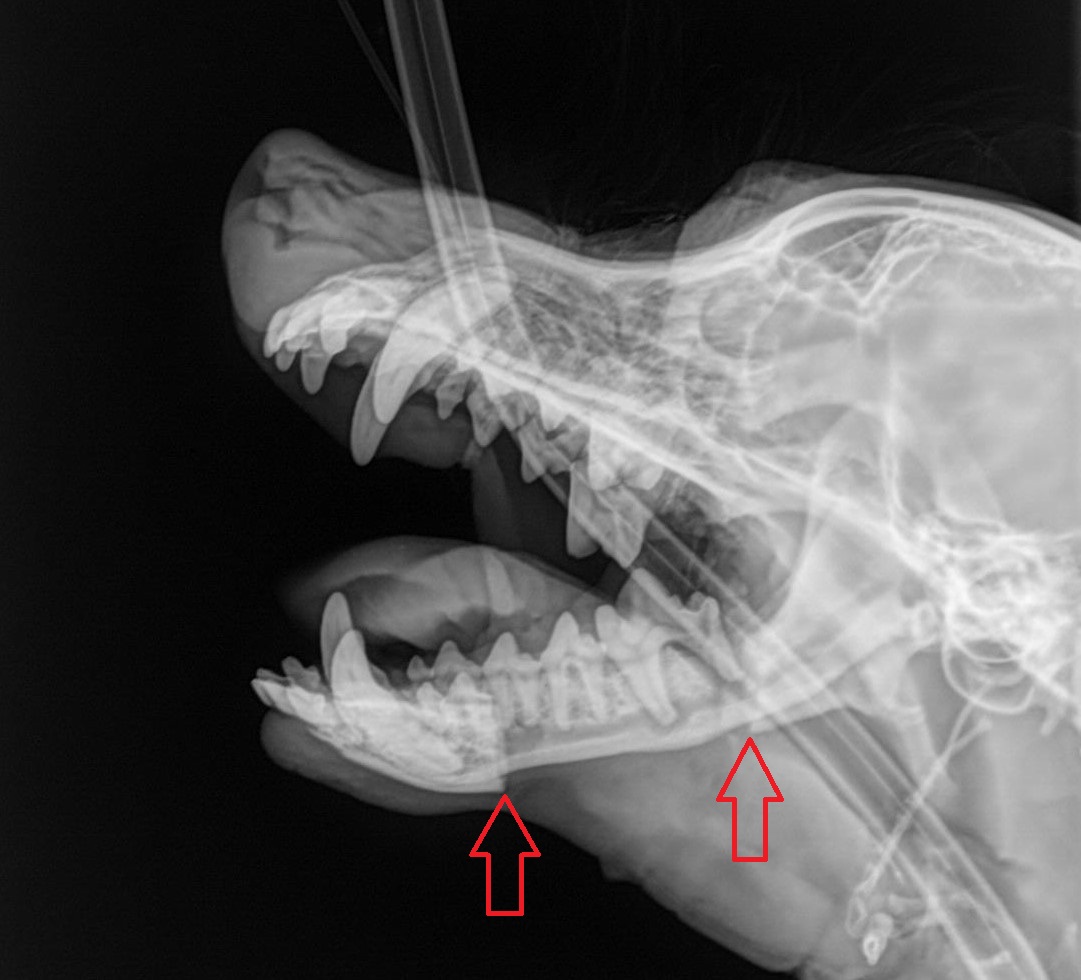
Surgery was uneventful and Oliver recovered smoothly.
Just a few hours after this invasive surgery, Oliver ate!
His nurse wrote: “Oliver is awake and walking around in his cage. I offered him small amounts of his own blenderized dog food and he ate it when I hand fed him. He also ate a little of the boiled chicken that his owner brought.”
Would you have believed that a dog would eat a few hours after a big part of the jaw is removed?
His super dedicated owner then chose to give Oliver the melanoma vaccine.
This is a very rare situation. We actually have a vaccine… against cancer!
It’s definitely not cheap, but it’s very effective.
About 4 months after surgery, Oliver’s owner wrote:
“He had his checkup exam today and chest radiographs. I am extremely happy to report everything looks good.
X-rays are clear and he is running around like a puppy, playing, eating and is unaffected after his surgery.
He is back to eating his kibble (not softened) and chewing on his toys.
I cannot thank you enough for your patience, professional advice on how to proceed, and your amazing skills as a surgeon.
Forever indebted.”
Then I didn’t hear much about Oliver, now 10 years old, until early May 2020.
His owner reached out to me because he started gagging, coughing and having difficulty breathing while awake, and making weird sounds while sleeping. He also couldn’t bark anymore…
His family vet did an exam of the mouth, and found a big mass, apparently attached to the roof of the mouth. Clearly, it was blocking his airway.
We performed emergency surgery the very next day.
The mass was the size of a walnut, which is huge for such a small dog. Upon further exam, under anesthesia, the mass was actually not attached to the roof of the mouth, but to the right tonsil.
Here is a picture of Oliver just before surgery – you can vaguely see the mass inside the mouth. You can also see the plastic tube which delivers oxygen and anesthesia gas.
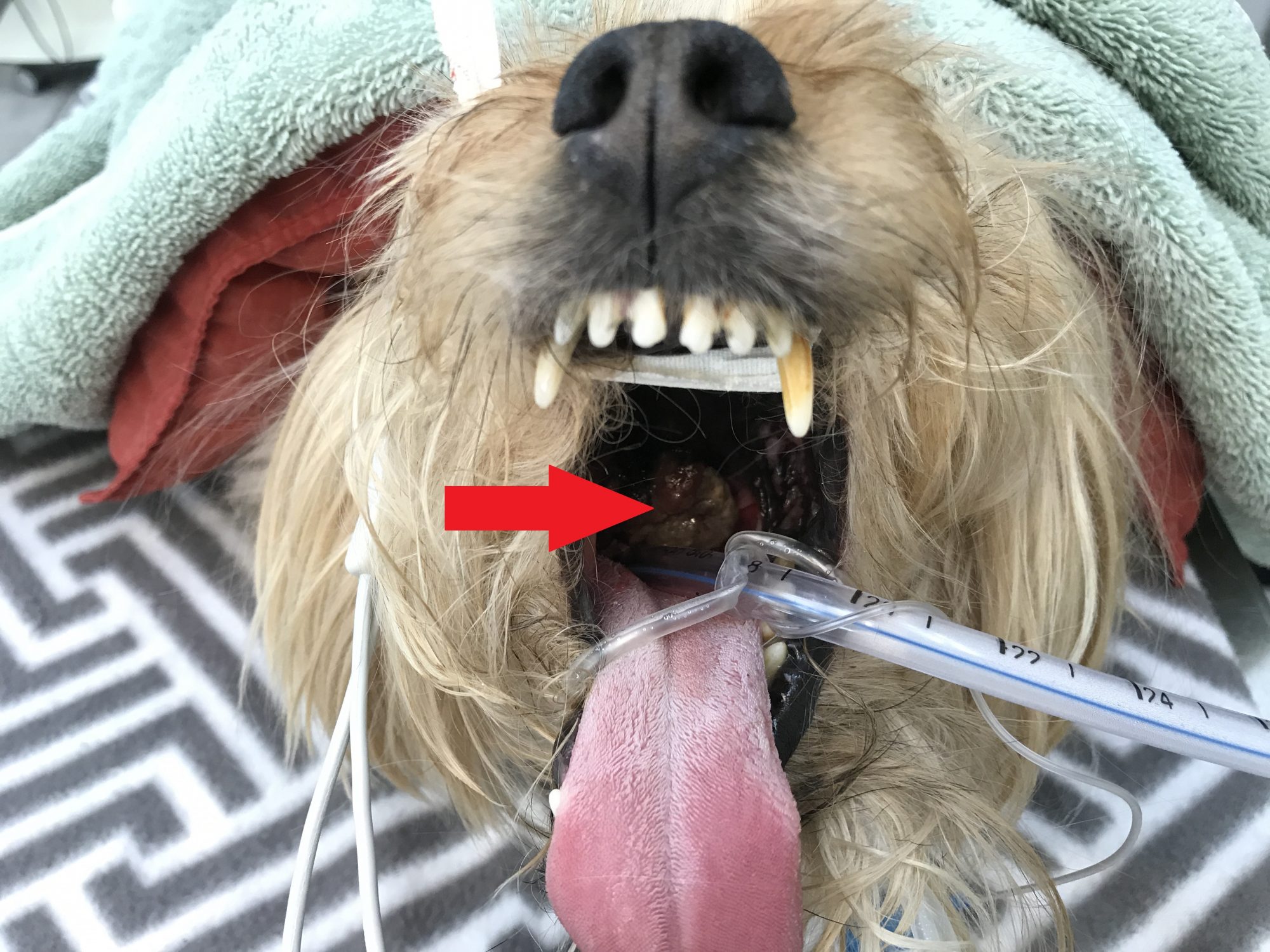
WARNING – what follows is graphic, read further at your own risk !!!
Here is a close up of the evil mass – I don’t think you need an arrow to see it…
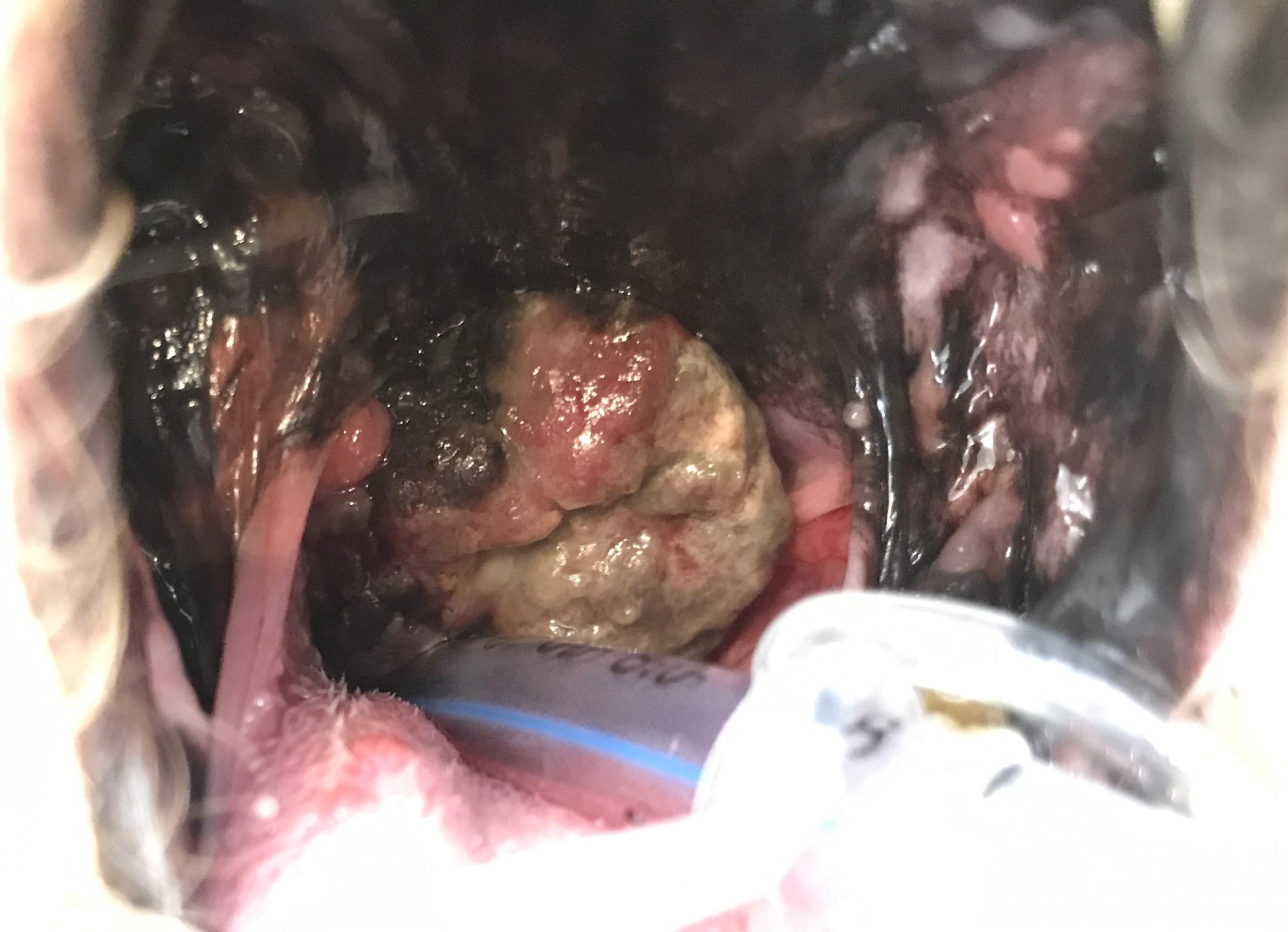
Surgery was rather tricky, but we were able to remove the mass safely.
Here is a postop picture. At the end of the red arrow are the stitches.
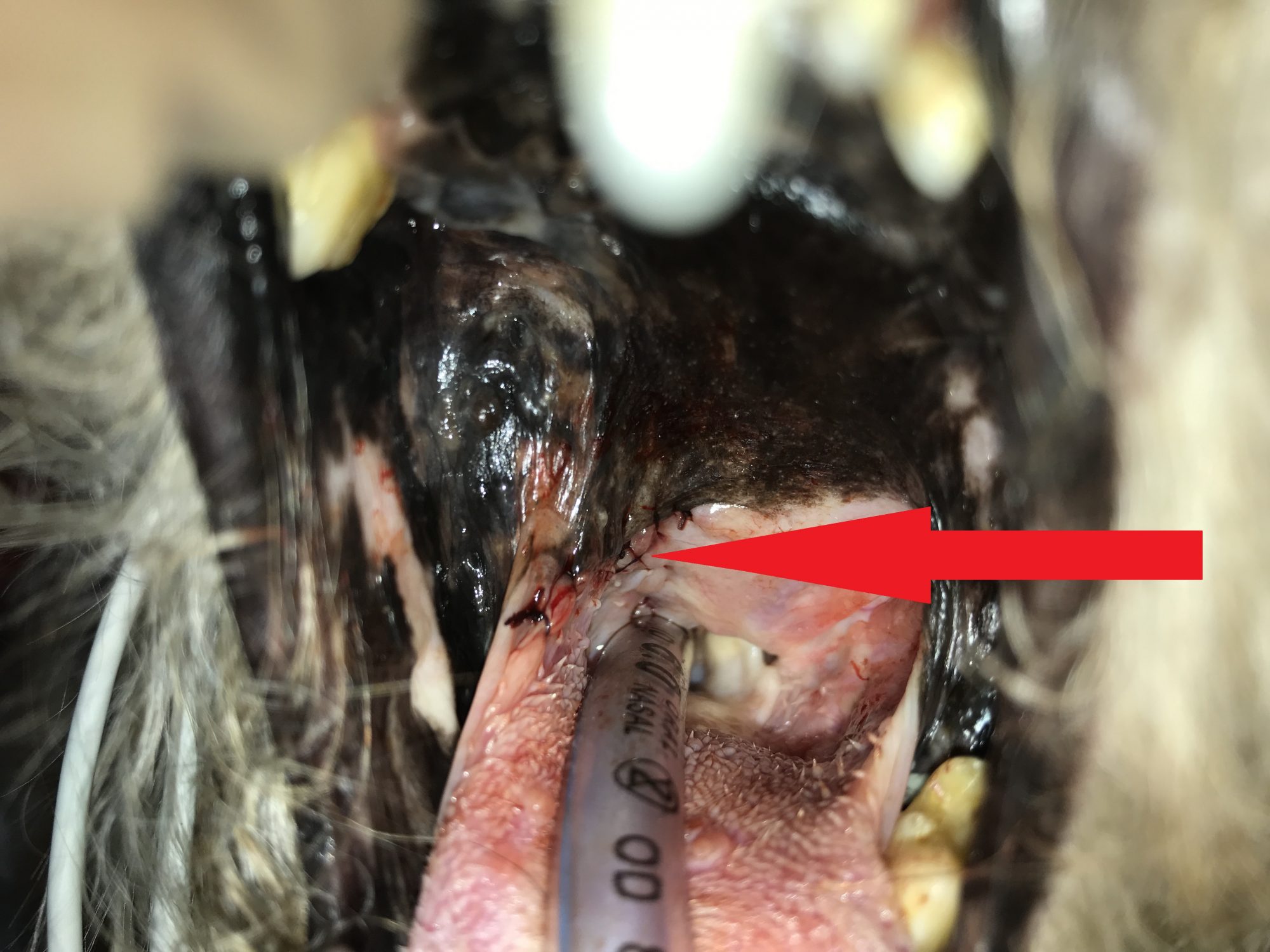
And this is the actual mass, just before we sent it to the lab for a biopsy.
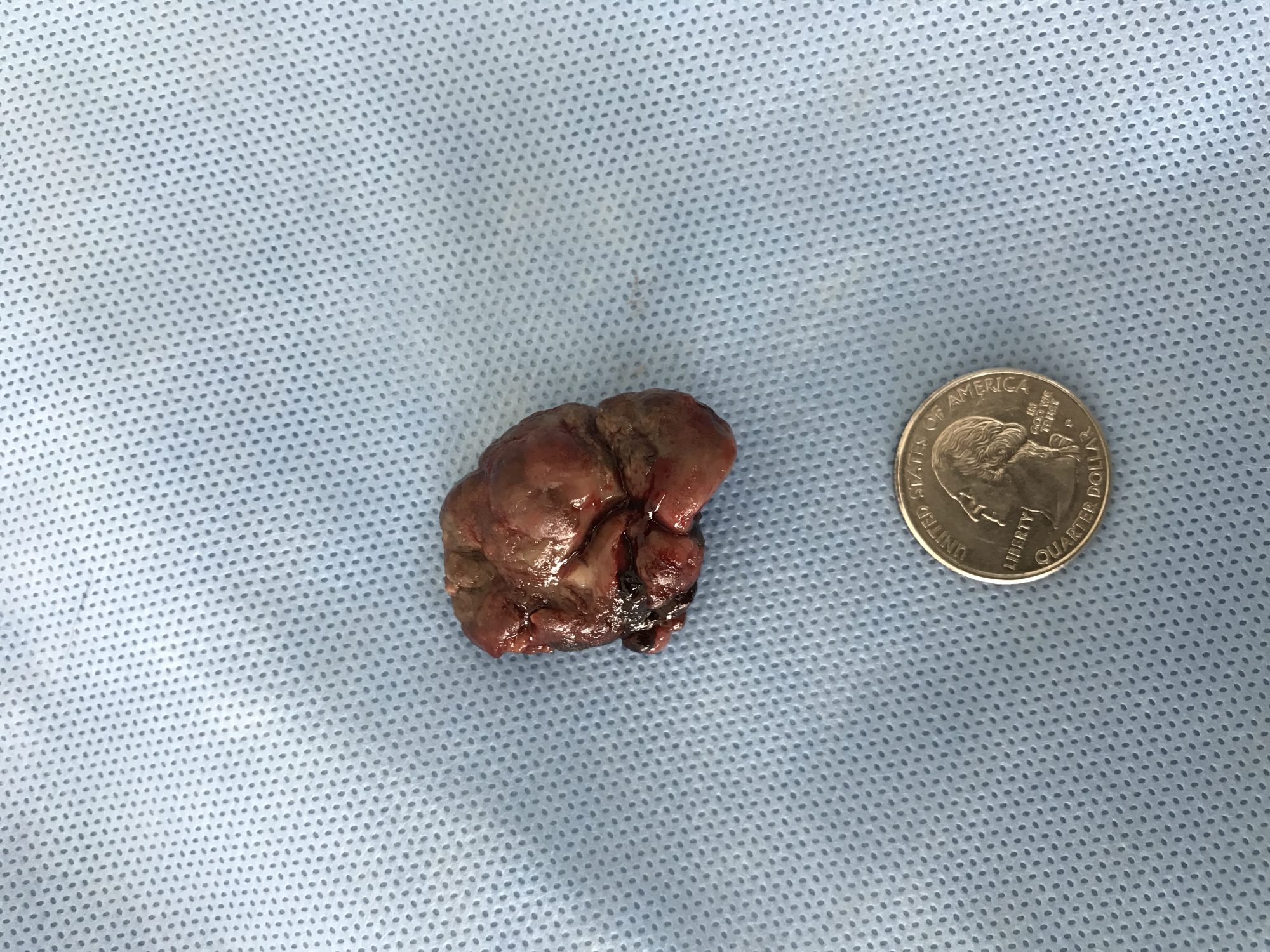
About a week later, the biopsy confirmed the suspicion: the mass was the same as last year, a malignant melanoma of the right tonsil. The only good news: we got it all.
The tonsil really behaves like a lymph node.
Since the initial cancer was in the right lower jaw, the theory is that this second mass could have spread from the initial mass, even though it had been removed completely at the time. Of course, it’s hard to prove, which is why it’s only a theory.
Shortly after surgery, Oliver could breathe much better.
Oliver is now recovering and we wish this cancer survivor the very best.
Phil Zeltzman, DVM, DACVS, CVJ, Fear Free certified

Dr. Phil Zeltzman is a traveling veterinary surgeon in Pennsylvania & New Jersey. An award-winning author, he loves to share his adventures in practice along with information about vet medicine and surgery that can really help your pets. Dr. Zeltzman specializes in orthopedic, neurologic, cancer, and soft tissue surgeries for dogs, cats, and small exotics. By working with local family vets, he offers the best surgical care, safest anesthesia, and utmost pain management to all his patients. Sign up to get an email when he updates his blog, and follow him on Facebook, too!
How to Be Your Pet’s Best Advocate
As a pet owner, you are responsible for your pet’s wellbeing. You need to be your pet’s best health advocate.

I’m regularly surprised when I hear pet owners confess that they are “totally confused” or overwhelmed after a visit with a family vet or a vet specialist.
They may be confused because of their own stress level during the visit, because of their emotional state, or because the vet used hard-to-understand medical jargon.
As between friends, family members, and even countries, the root of most problems is miscommunication.
So maybe having a checklist would help you avoid misunderstanding your pet’s care and make better decisions.
Of course, every condition, every pet, every visit is different.
But let’s see if we can come up with guidelines that will work for most visits.
Let’s go over important points to remember before, during and after your visit at the vet.
Before the visit:
. Research: Before your visit, research the practice and the vet. Is it a general or a specialty hospital? Are you meeting with a generalist or a specialist? A generalist will have the letters DVM after their name. There is one exception: general vets who graduate from Pennsylvania have the letters VMD after their names.
A specialist will have the same letters (DVM or VMD), followed by more letters.
A board-certified surgeon (like me) will also mention something like DACVS or Dip. ACVS, which stands for Diplomate of the American College of Veterinary Surgeons.
A board-certified internist will also mention DACVIM or Dip. ACVIM, which stands for Diplomate of the American College of Veterinary Internal Medicine.
The list goes on, depending on the specialty.
If they don’t have those additional letters after their names, they cannot call themselves specialists. It does not mean they aren’t competent to treat your pet. It does mean that they are not considered specialists by our governing veterinary organizations and shouldn’t call themselves specialists.
Don’t always trust what you read online, however what have previous pet owners thought of their interactions? Pay a quick visit to the practice website, Facebook page and Google description. I would stay away from other more “questionable” sites, which I won’t mention here. One is notoriously unreliable. Enough said.

See what the common theme is: was the vet especially kind? A true pet lover? Genuinely caring? Easy to understand?
The tough part is what to do with negative comments. Are they real? Or are they posted by disgruntled clients who can never be satisfied, are chronic complainers, or who wrongly accuse the vet for being the worst simply because they can’t afford their treatment?
If you really want to be thorough, you can visit the website of the veterinary board for your State and make sure your vet’s license is in good standing, and that no complaint was filed against them. It’s public information. It’s a bit extreme, but not completely ridiculous.
. Goals: What are your goals going to the vet? Make a list of 2 or 3 important questions you have. Not 10 or 20 or 30. Limit yourself to 2 or 3.
. Quality of life: How is your pet’s quality of life now? Has it deteriorated? Are you trying to improve it?
. Symptoms: Bring a list of the problems or symptoms you’ve noticed with your pet, and when. Keep a log, either on paper, or in a physical calendar, or digitally. If there is a known cause, write it down.
For example: “July 10 – not using right back leg normally after playing ball. July 15 – limping about 33% of the time. July 20 – limping 75% of the time.”
. Medications: Prepare a list of all medications, vitamins and supplements. In addition, bring the actual drugs with you, just in case.
Include every medication you give, why you’re giving it, the prescribing doctor, and the dosage. You can provide a simple log like this:
. Drug name (generic or brand name).
. Prescribing doctor.
. Reason for giving it.
. How much you give (in tablets, capsules, mg or ml).
. How often you give it.
. Any reaction or side-effect noticed.
For example: “On April 25, Dr. Smith prescribed gabapentin for pain control. I give 300 mg every 8 hours. Chelsea is doing much better on it. No side-effects noticed.”
This information is very important to a vet. We need to know what works and what doesn’t. And we also need to make sure there are no interactions.
. Allergies: Bring a list of known allergies or bad reactions: fleas, grass, pollens, chicken, carprofen…
. Records: If you’re going to a new family vet, be sure to have a copy of previous medical records that include previous vaccines, conditions and treatments.
. CPR: If your pet might need anesthesia, you will be asked if you want your vet to do CPR or not in case of serious emergency. Rather than CPR, the form may ask if you want to resuscitate your pet. If you don’t, we call this DNR, or Do Not Resuscitate.

If you’re not mentally prepared, you may not be ready to answer the question and sign on the dotted line.
Don’t be scared or offended. It’s not a prediction. It doesn’t mean anesthesia is a death sentence.
It’s merely a precaution. Should something bad happen (which is incredibly rare), your vet won’t have time to call you and ask what you want to do.
They need to know ahead of time. So please think about it ahead of time.
During the visit:
. Understanding: If you don’t understand the plan, ask.
If you don’t understand a specific word, ask.
If you are completely lost, ask.
Don’t be shy or embarrassed. You understand things in your own profession. Nobody said you had to magically know everything about vet medicine.
You do however have a responsibility to understand the care provided to your pet.
Ask questions until you understand what you sign up for.
. Testing: As an example, make sure you understand why a test is recommended. Why is this blood work needed? Why are these X-rays recommended? Why is a CT scan, an MRI or an ultrasound necessary? Your vet won’t (shouldn’t) recommend an unnecessary test, but you still need to understand why it’s recommended.
Ask when you will receive the results of the test. Make a note in a calendar. Be sure to follow up if you don’t hear from your vet or a nurse. Of course, make sure your contact information is accurate.
. Medicating: If a new medication is prescribed, make sure you understand why you are giving it and how. The basics are written on the label, but not everything fits! What does it do? Should you give with food? What side-effects might happen?
. Hospitalizing: If your pet needs a procedure or surgery, ask if it will be done as an outpatient or inpatient basis. If an overnight stay is required, ask whether your pet will have supervision. Be aware that 99% of family practices do not have anybody in the building overnight.
This is not necessarily a problem, it’s simply something you need to be aware of and you should fully understand and accept. You could choose to take your pet home or to a local emergency clinic overnight.
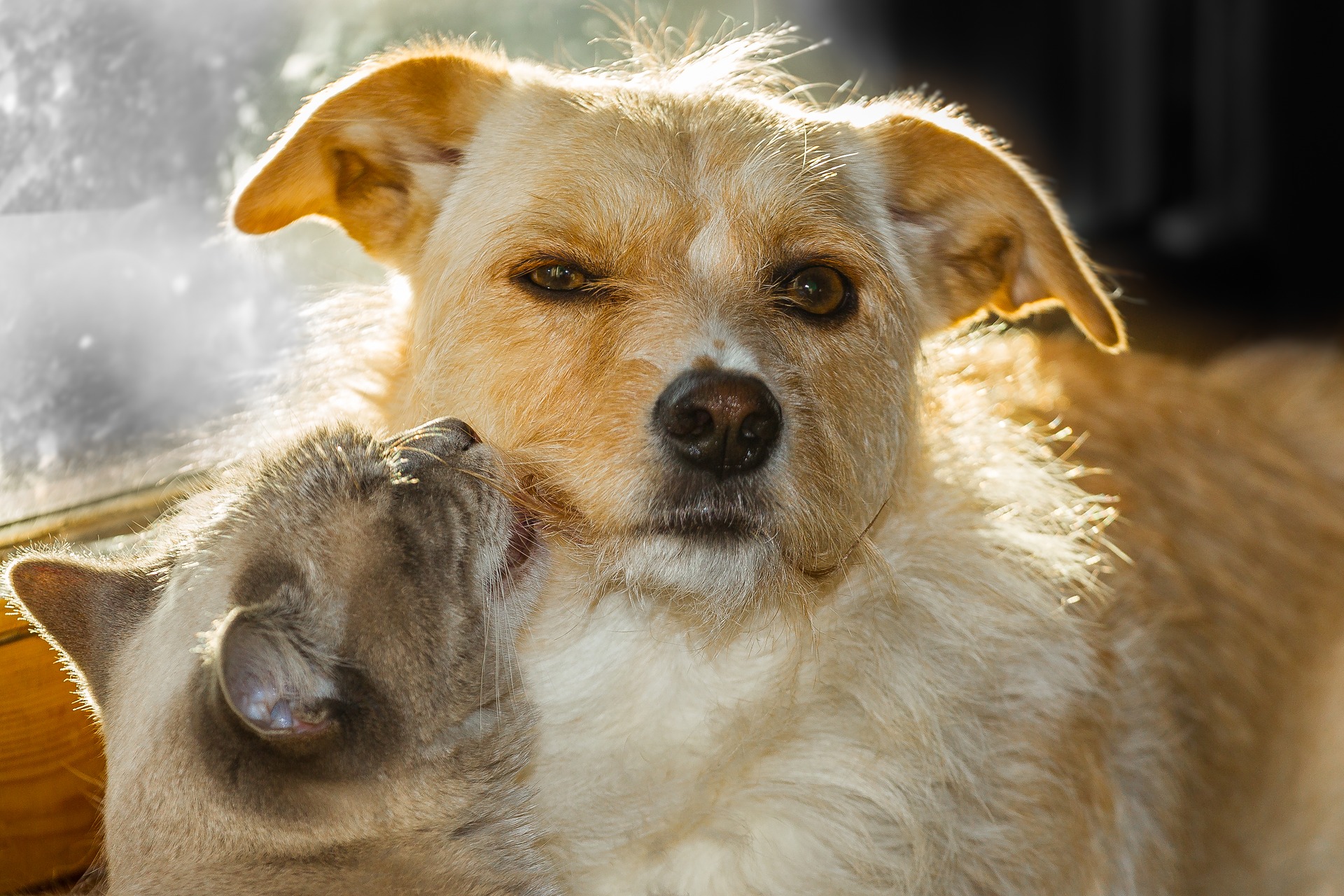
. Discharging: After a procedure, such as surgery, you should receive written discharge instructions. Take the time to make sure you review, line by line, usually with a nurse, your pet’s discharge instructions. Ask questions. Take notes. Who can you call if you have question once you get home?
. Diagnosing: If you receive a diagnosis, make sure you understand the exact name of the condition. Don’t be shy about asking how to spell it if you’re not sure. Have someone spell it out for you.
Ask questions. What is this condition? How convinced is your vet? 25%? 50%? 100%? Is it a working diagnosis, ie a suspicion, or a certainty?
Do we need another test to confirm the suspicion?
What is the treatment? What is your vet’s personal experience with it?
Is the treatment common and standard? Is it rarely offered? Is it experimental?
. Recapping: Remember the list of 2 or 3 important questions you created before going to the vet (see question #1)? Did you get them answered?
After the visit:
. Impressions: How do you feel after your visit? I don’t mean mentally, since you may feel angry, overwhelmed or depressed. I mean how do you feel about the vet you met? Do you feel trust? Does your experience match the online reviews you’ve read? Are you ready to follow the recommendations you heard? Are your comfortable with your experience, the hospital, the staff and the doctor? What does your gut tell you?
. Education: Educate yourself. Read the information your vet gave you. Visit RELIABLE web sites to learn more about the condition. Websites from vet schools, your family vet and specialty hospitals should have trustworthy information. Rather than relying on chance, ask your vet which websites you can trust.
Be extremely careful with information you find on random sites, chat rooms and personal sites. The problem with the internet is that anybody can claim to have much more knowledge than they really do. Vets cringe when they read the false but convincing information you can find “out there”.
. Recommendations: What are the pros and the cons of the treatment recommendation? What are possible complications? What are possible side-effects? What could go wrong? What are the chances of success?
. Decisions: If you need to make a decision about a specific treatment for your pet, you don’t have to do it alone.
If you met with a specialist, make the big decision with your vet. Get your family, or a trusted friend, involved.
My 2 cents: don’t take advice from friends and family members who do not own a pet. They may have good intentions, but they probably cannot understand the emotional bond you have with your pet.
And from experience, I can tell you it’s very likely that they can’t possibly understand why you would be willing to spend money on an animal.
The list above is far from exhaustive, but it should be a good start for you to ensure a successful visit with your vet. It will help you become a great advocate for your pet. And it could help you save your pet’s life.
Phil Zeltzman, DVM, DACVS, CVJ, Fear Free Certified

Dr. Phil Zeltzman is a traveling veterinary surgeon in Pennsylvania & New Jersey. An award-winning author, he loves to share his adventures in practice along with information about vet medicine and surgery that can really help your pets. Dr. Zeltzman specializes in orthopedic, neurologic, cancer, and soft tissue surgeries for dogs, cats, and small exotics. By working with local family vets, he offers the best surgical care, safest anesthesia, and utmost pain management to all his patients. Sign up to get an email when he updates his blog, and follow him on Facebook, too!
A crash course in cancer surgery (Emmie’s story)
Emmie, a 9 year old Golden Retriever, had a small mass on her left thigh.
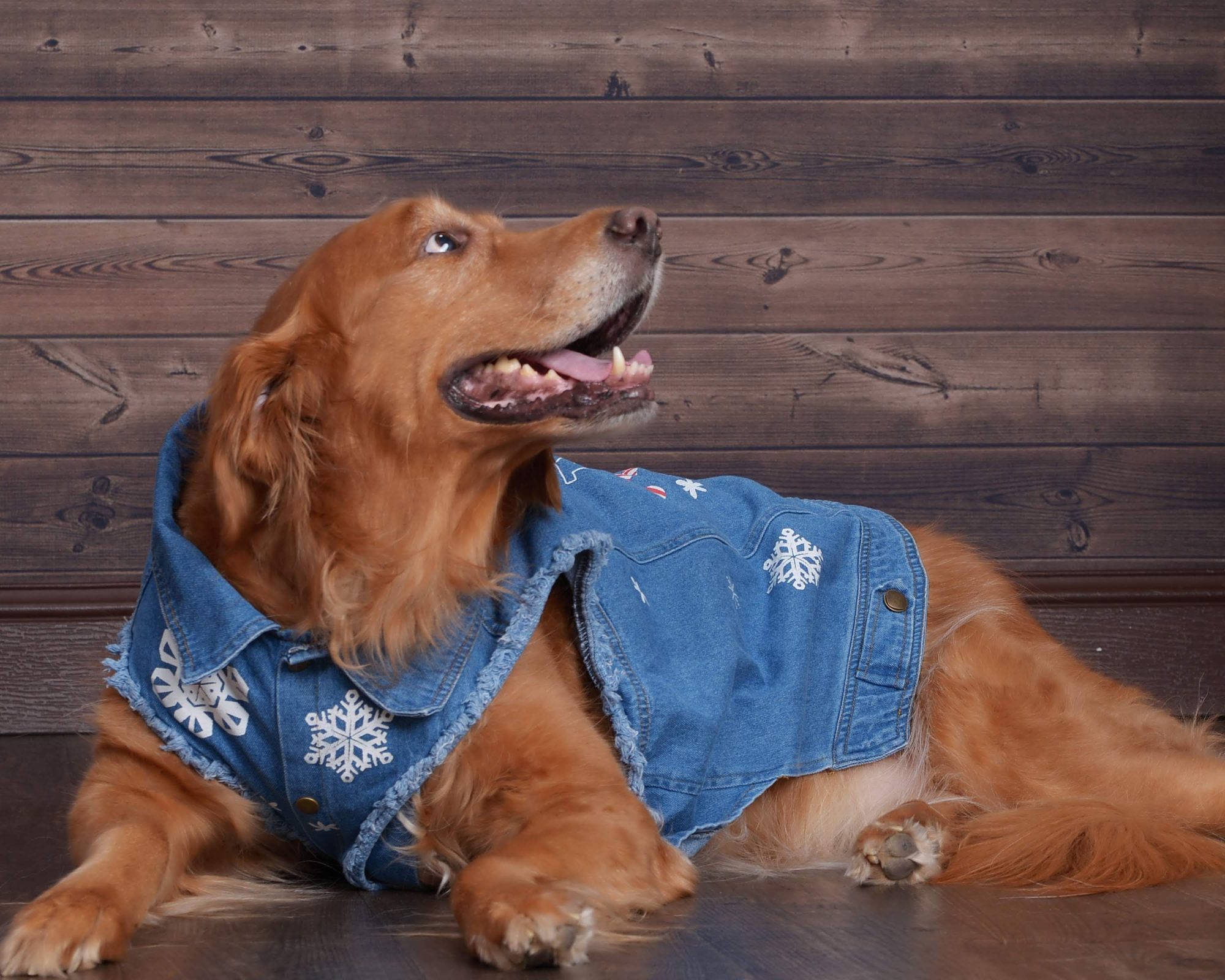
For weeks, it waxed and waned.
A needle test (a Fine Needle Aspirate or FNA) suggested a mast cell tumor, a very common skin tumor.
Eventually, it almost disappeared. Instead of brushing it off, her amazing owner reached out to me and asked me to remove it regardless.
This is how tiny the mass was at the time of surgery: less than 1 cm, or less than half an inch. It was basically flat. It would have been impossible to see or feel under a Golden retriever’s hair!
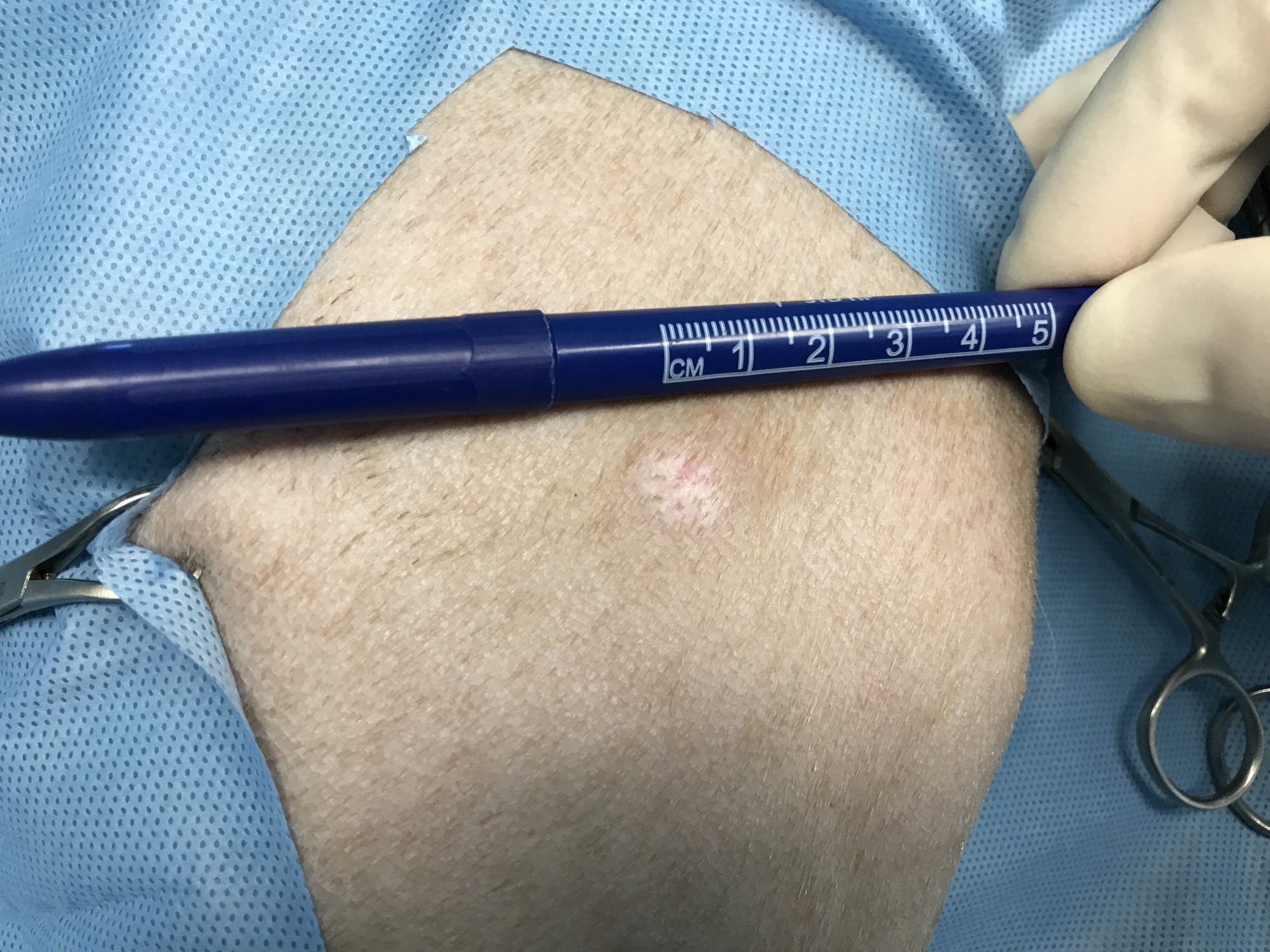
How many pet owners do you think would have requested surgery to remove it?
Well, Emmie’s owner sure did!
Because of the behavior of a mast cell tumor, and without knowing how aggressive it was (ie without knowing it’s “grade”), the surgery had to be aggressive.
With a special pen, a 3 cm in diameter circle (a bit over 1 inch) was drawn around the mass.
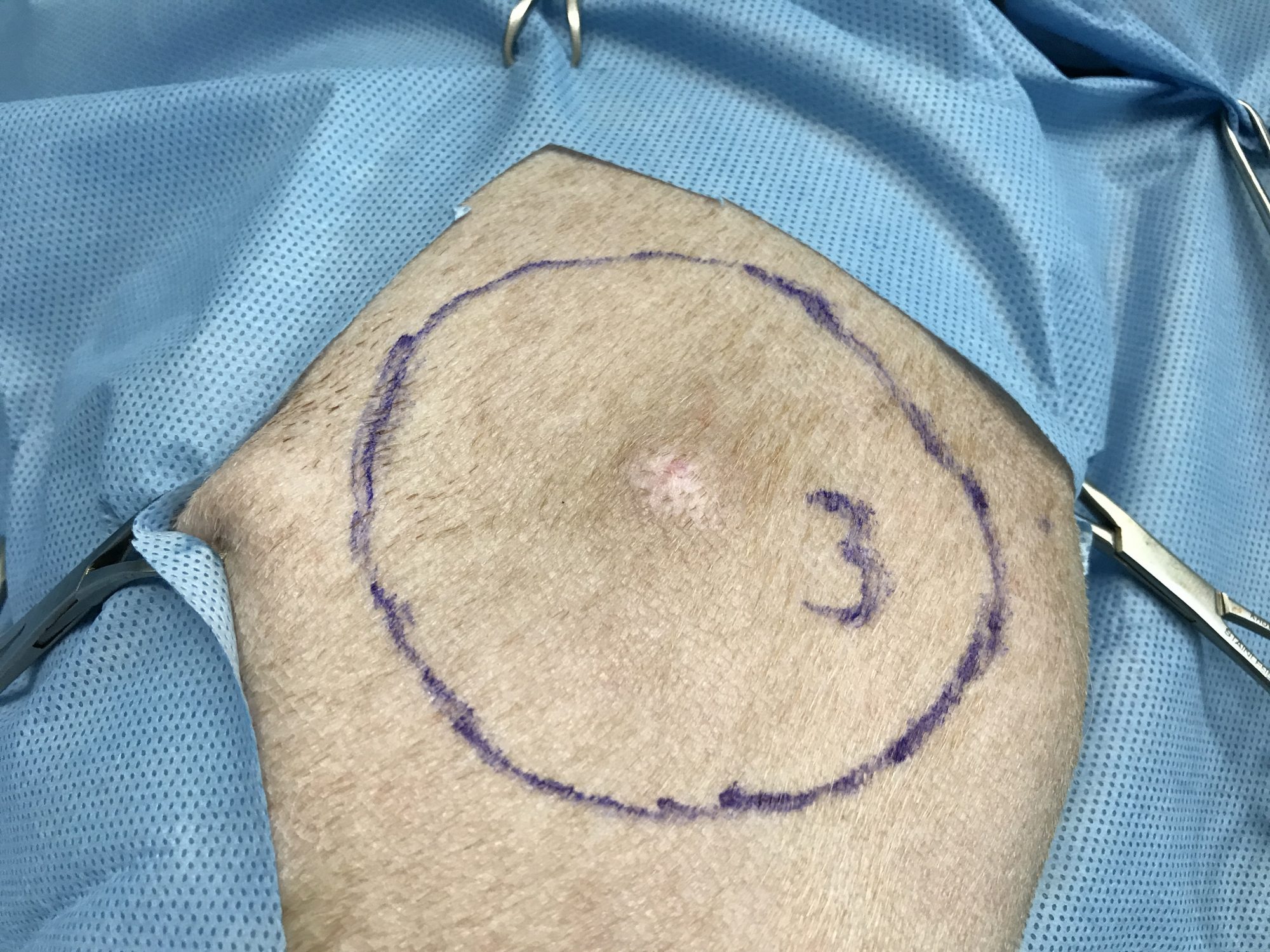
However, we cannot remove a circular area of the skin (the scar would be tight and ugly). We can however remove an oval area. So the shape was changed to this:
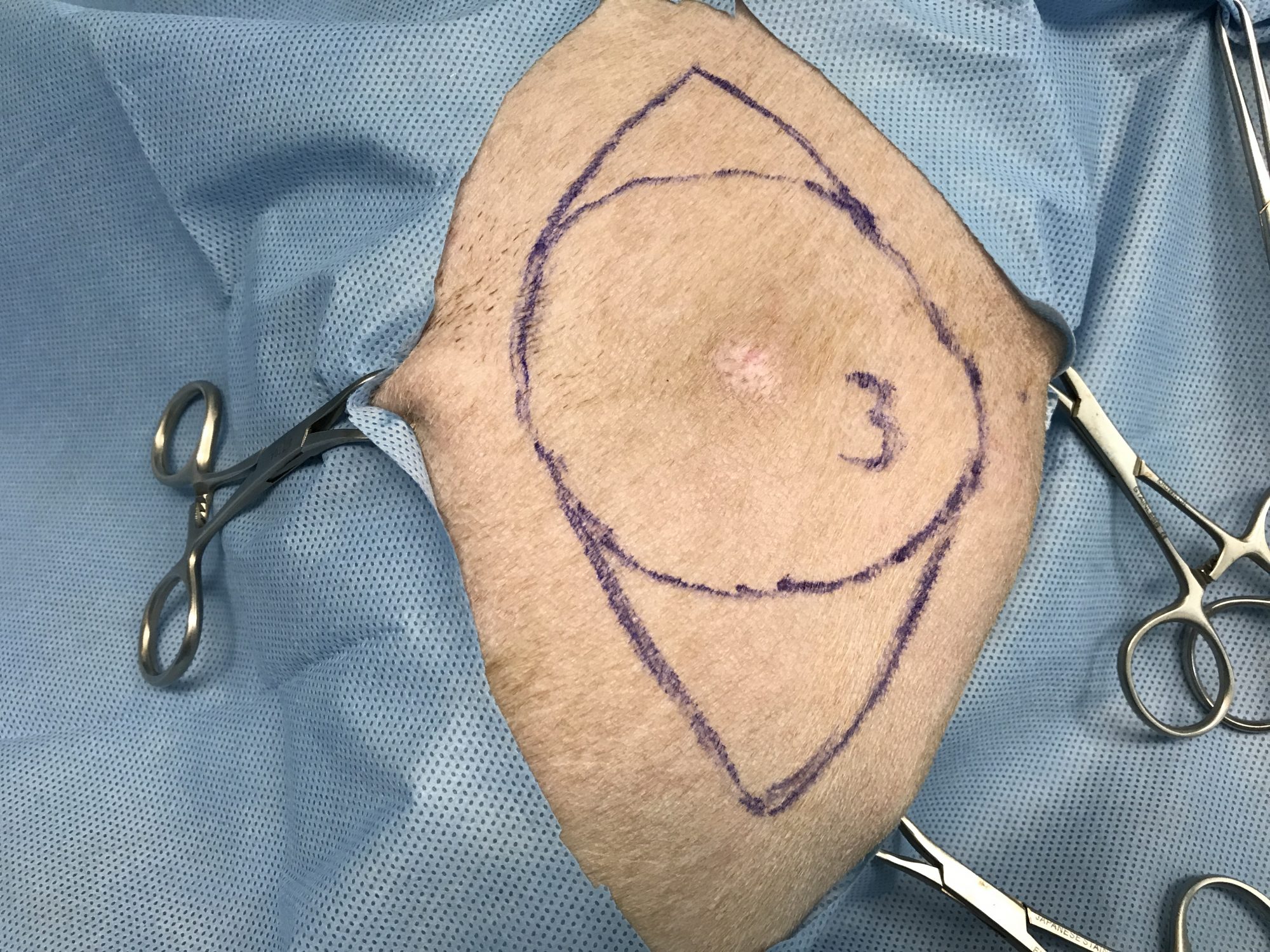
Then the mass was removed along those purple lines (OK, OK, for the purists, this is a fusiform shape, not oval).
One week later, the biopsy came back. A mast cell tumor was confirmed – a grade 2, which is considered “intermediate.”
(Grade 1 is low grade or least aggressive, grade 2 is intermediate grade, and grade 3 is high grade or most aggressive)
The good news however is that being aggressive to remove the mass (and not wishy-washy) allowed us to “get it all.” Here is a picture of the incision:
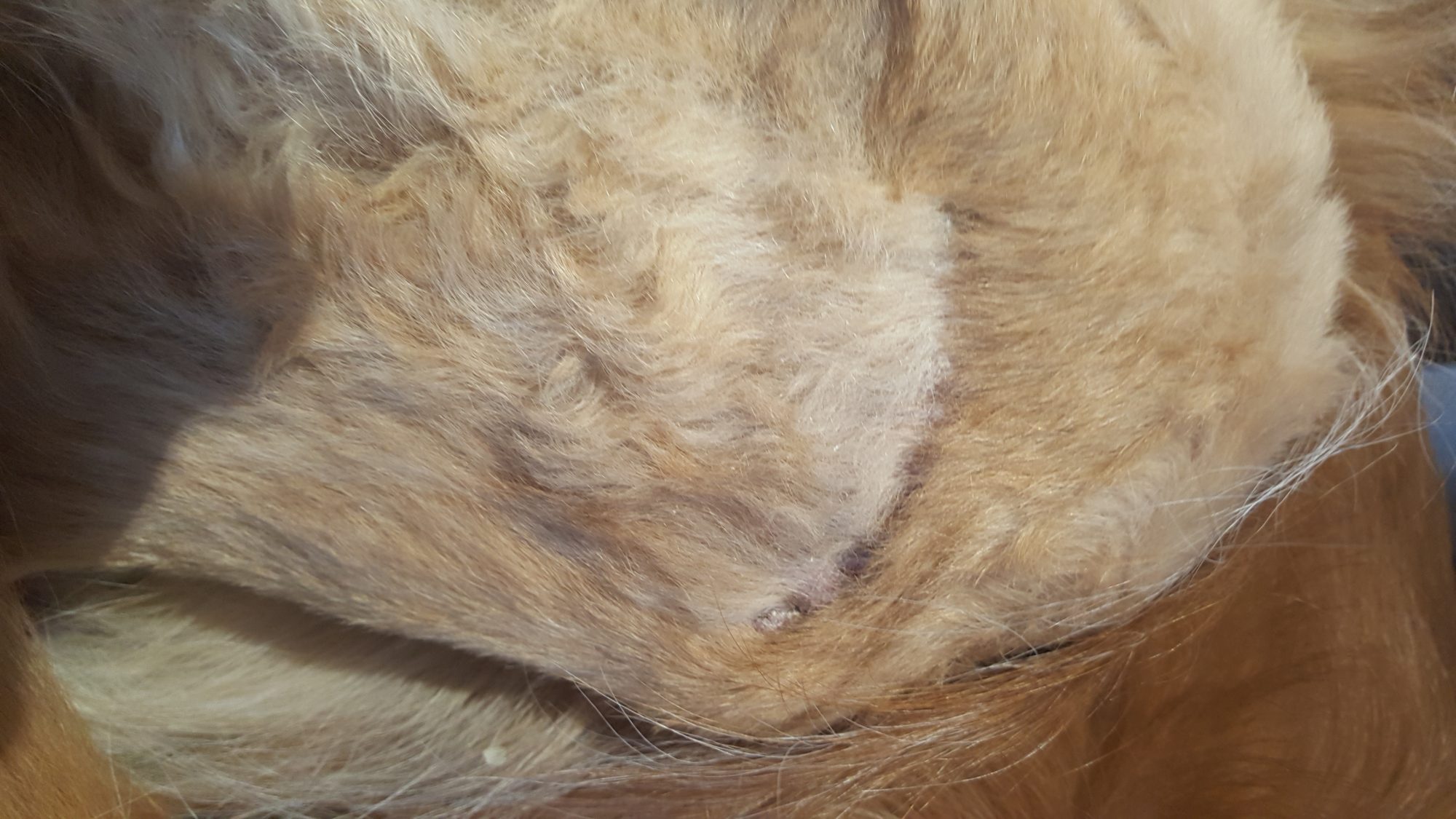
Now, Emmie has fully recovered and can enjoy her walks again.

Her owner simply commented: Emmie
“looks great!! I’m very happy with my decision!”
Phil Zeltzman, DVM, DACVS, CVJ, Fear Free Certified

Dr. Phil Zeltzman is a traveling veterinary surgeon in Pennsylvania & New Jersey. An award-winning author, he loves to share his adventures in practice along with information about vet medicine and surgery that can really help your pets. Dr. Zeltzman specializes in orthopedic, neurologic, cancer, and soft tissue surgeries for dogs, cats, and small exotics. By working with local family vets, he offers the best surgical care, safest anesthesia, and utmost pain management to all his patients. Sign up to get an email when he updates his blog, and follow him on Facebook, too!
At what age should you spay or neuter your cat?
The American Veterinary Medical Association (AVMA) recently published their guidelines on the age to spay or neuter cats. The official title of the document is “Veterinary Task Force on Feline Sterilization Recommendations for Age of Spay and Neuter Surgery.”

This is a highly controversial and debated topic (even more so in dogs). There are many opinions out there.
Most people have an opinion on the subject, often based on dogma or personal beliefs more than science.
The AVMA put together a group of various veterinarians (from corporations, private practice, vet schools and associations).
They also included non-veterinarians: Steve Dale (behaviorist and journalist), a lady from the Philanthropy for Animal Advocates and the Chair of the Cat Fanciers’ Association.
So I think it’s fair to say that there were many cat lovers and cat advocates on the team. So what are their conclusions? I quote (I only added a few definitions between parentheses):
“Current recommendations for the age to sterilize (spay/neuter) cats are arbitrary and inconsistent.
Adoption of evidence-based guidelines is expected to limit confusion among cat owners, reduce the risk of unwanted litters, and maximize health and welfare benefits. (…)
The following key findings and proposals emerged from a review of the currently available scientific literature and group discussion:
1. Recommendations for the optimal age to sterilize cats may differ from the age to sterilize dogs.
2. Current scientific evidence documents benefits of spaying kittens before the first estrous cycle, including the following:
. Decreased risk for mammary carcinoma (aka breast cancer).
. Elimination of reproductive emergencies such as pyometra (aka an infected uterus) and dystocia (aka difficulty giving birth).
. Avoidance of unintended pregnancies that may occur as early as 4 months of age.
. Potential decrease in behavioral problems linked with cat relinquishment.
3. Current evidence does not support an increased risk for cats of complications or long-term adverse health effects with pediatric (6-14 weeks) or juvenile sterilization (>16 weeks).
4. More controlled prospective research specifically examining different ages in sterilization in cats is needed.
As new information becomes available, the recommended age for sterilization of cats should be revisited.
5. There is potential to increase the number of sterilized cats and reduce the unplanned/unwanted litters of kittens if veterinarians routinely schedule this surgery for client-owned cats at the end of the kitten vaccination series.
Given the known benefits of sterilization and the lack of evidence for harm related to age at which the procedure is performed, the Veterinary Taskforce on Feline Sterilization calls for veterinary practitioners and professional associations to recommend sterilization of cats by 5 months of age.
This provides veterinary practitioners with a consistent message that may increase veterinary visits and spay/neuter compliance while reducing the risk of pet relinquishment and unwanted offspring.”
Bottom line: spay or neuter your kittens by 5 months of age.
Simple!
Phil Zeltzman, DVM, DACVS, CVJ, Fear Free Certified

Dr. Phil Zeltzman is a traveling veterinary surgeon in Pennsylvania & New Jersey. An award-winning author, he loves to share his adventures in practice along with information about vet medicine and surgery that can really help your pets. Dr. Zeltzman specializes in orthopedic, neurologic, cancer, and soft tissue surgeries for dogs, cats, and small exotics. By working with local family vets, he offers the best surgical care, safest anesthesia, and utmost pain management to all his patients. Sign up to get an email when he updates his blog, and follow him on Facebook, too!

